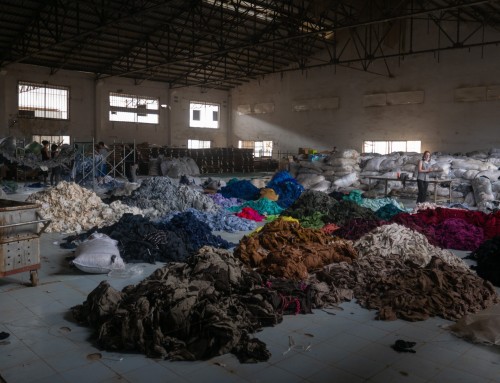The concept of fashion has dramatically transformed over the years, with the evolution of technology impacting style, design, and manufacturing of clothes. Back in the Stone Age, humans simply wore animal fur to address the necessity of keeping their bodies warm and protected from the harsh elements of the earth like the snow, wind, sun, and rain. Clothing has always been both a necessity and a means of expressing one’s identity. Now, technological advancements have made it possible to produce synthetic fabrics for various purposes. Some of them are so high tech that the designed suits can even withstand a daring trip to outer space or a deep exploration underneath the ocean. Here are some ways how technology has influenced the textile industry.
Mechanization of Production
The invention of the power loom, along with the development of the mechanized mill for cotton fabrication, have resulted in an increase of production of textiles. Computerized knitting and weaving machinery make it possible for people to enjoy different types of knitted fabrics, from cotton knits, blends, wool, merino wool, and cashmere to help people keep warm and comfortable, while keeping them in style. Automatic sewing machines have made it easier to produce better structured clothes. These technologies have shortened the time required and the human effort involved in making fabrics and clothes. Garments and textiles are now made to the exact specifications encoded in the machines, with faster speed and better precision, resulting in a product that is even more durable.
Enhancement of Quality Control Procedures
Automation has paved the way for higher quality standards with reduced errors. Truth be told, humans are prone to making a lot more mistakes when they are compared to machines. This preprogrammed equipment hardly make mistakes and are more precise, too. They are not prone to fatigue, like humans, so they can continue with the same quality of backbreaking work without a need for rest. With advancements in technology, human errors have been minimized. This has paved the way for better quality products with less costs involved, making the product more affordable for the consumers.
Development of Better Fabrics
Due to technological advancements, the production of smart and adaptable fabrics is now achievable with the purpose of improving the way human beings do things. For instance, the use of force microscopy and polymetric nano fibers in design and manufacturing of textile have made it possible to come up with durable and adaptable clothes. These functional garments are in use for special applications like space travel, various sports, and ergonomic uniforms for the military. The best example for this is the moisture wicking, dry-fit sports clothes that many people are inclined to wear when they go to the gym. This whole advanced branch of functional sports apparel, some of which even come with built-in SPF and anti-bacterial properties, has resulted from technological breakthroughs.
Utilization of Computers in Design Development
Computers play a prominent role in textile technology and design from the early beginnings in the conceptualization stage down to the visualization of the final design. Designers no longer must rely on just their imagination and their trusty pen and paper to visualize their creations. The finest details can be explored with computer imaging to see how all the elements work out together. Making modifications become a breeze with the use of CAD (which stands for computer-aided design) so that all aspects of design can be fully explored before they undergo the manufacturing process. Computer technology has made it so much easier to see a designer’s vision; and the designer himself can play around with many different ideas to see what will work well together and what will not, which eventually saves him time and effort.
Exploration of Exciting New Innovations
Technology is the primary reason why textile design innovations have emerged and will continue to emerge and evolve during the coming years. From simple clothing to more elaborate garments that transcend fantasies and turn them into realities, technology has made it very feasible for inventors to dream up their wild design ideas and make them into real possibilities that humans can enjoy. Perhaps, in the future, there will be a single garment that people can use for both summer and winter with the capacity of changing its texture based on digital sensors that respond to the external environment. If they were able to invent fabric that can withstand the harsh elements of outer space, then they can do just about anything that they set their minds to. Technology serves as a tool to make it all happen.
Fabric technology and all its applications have scaled tremendous heights, and they shall continue to aim to be better than before. Textile and fashion go hand in hand, so there are many more exciting trends that people can expect in the future. The quest for better fabric, more avant-garde designs, and more functional clothing that will help daily human life continues on with the same intensity with the help of technological advancements and breakthroughs.
Brittany Waddell is a contributing writer and media specialist for Coastal Business Supplies. She often produces content for a variety of textile blogs.

